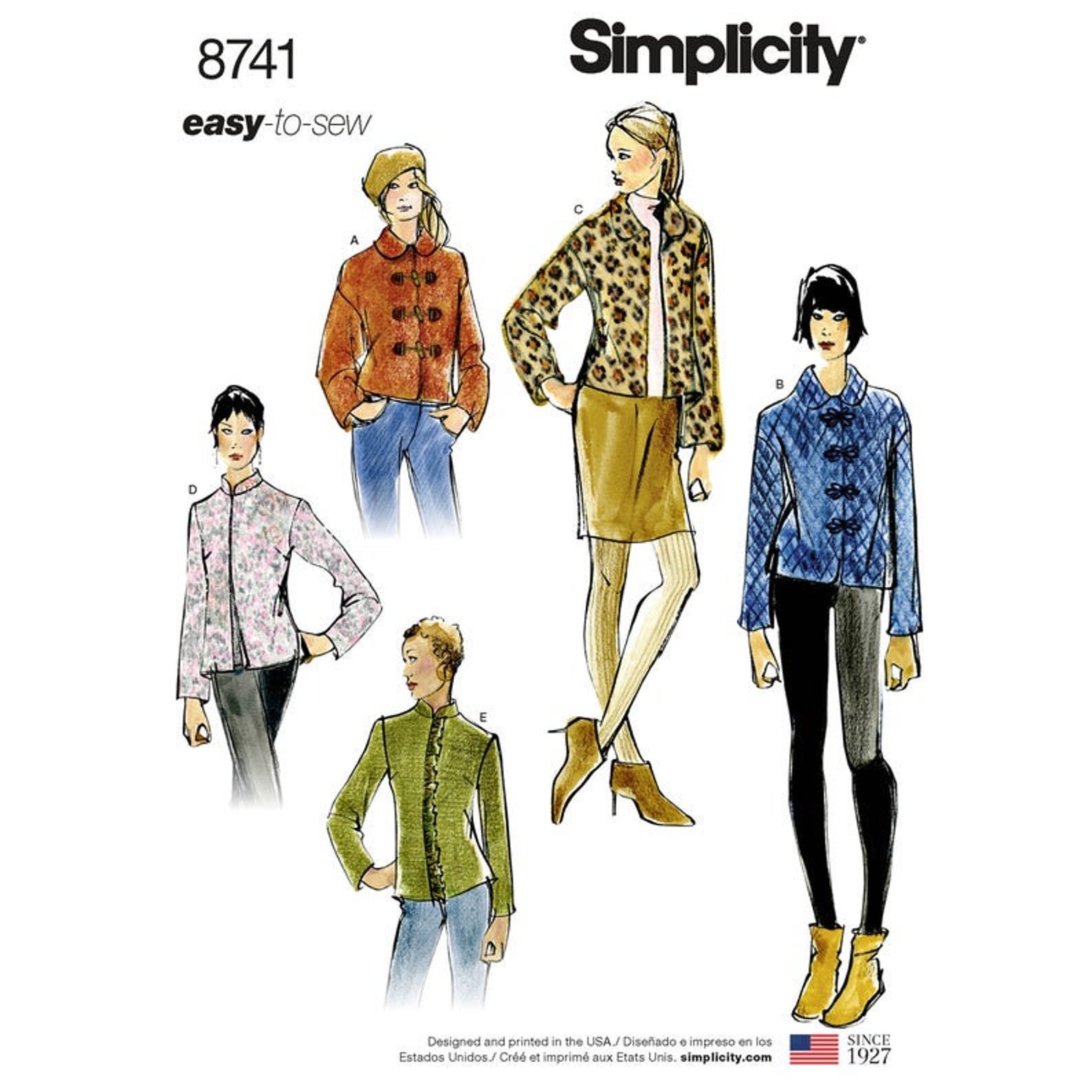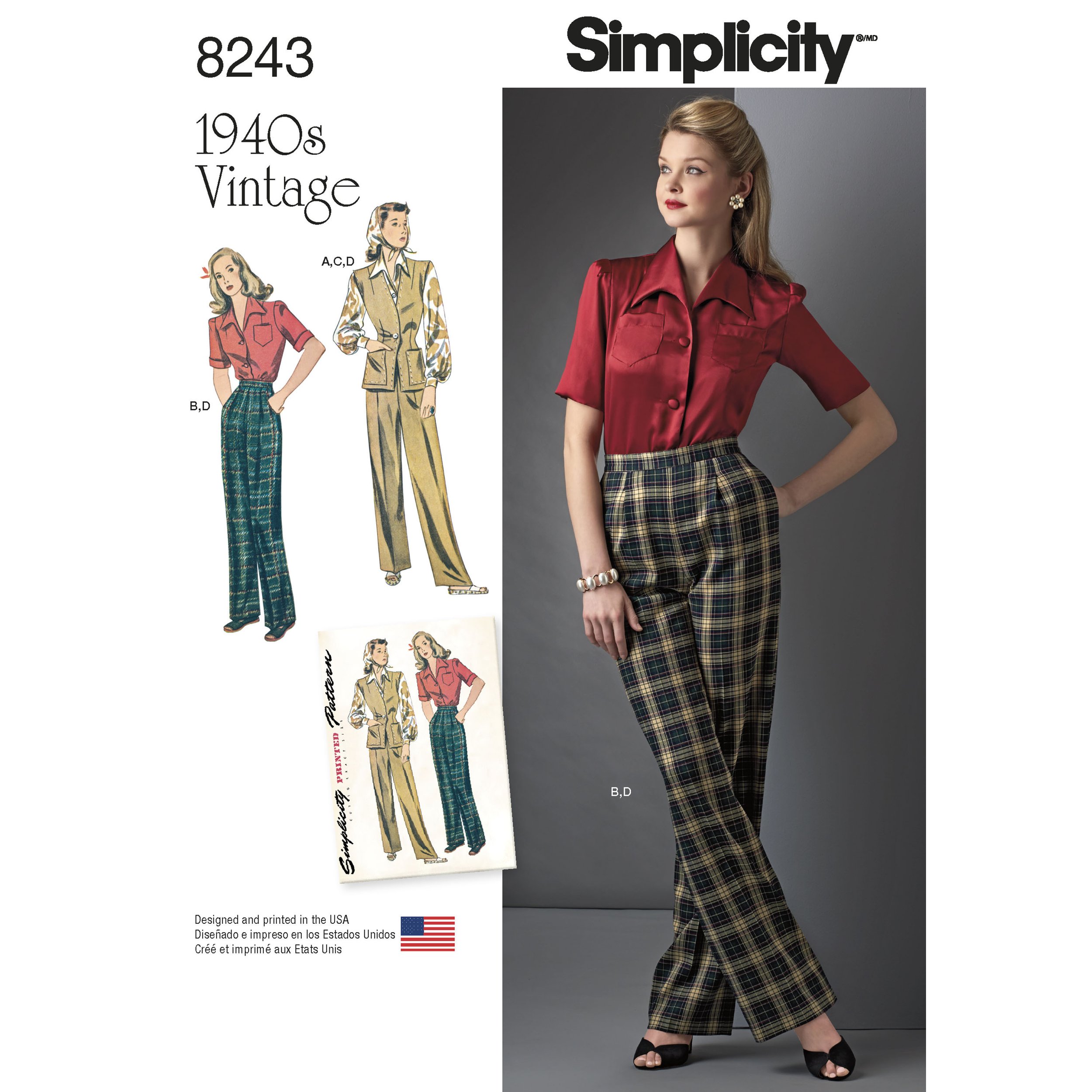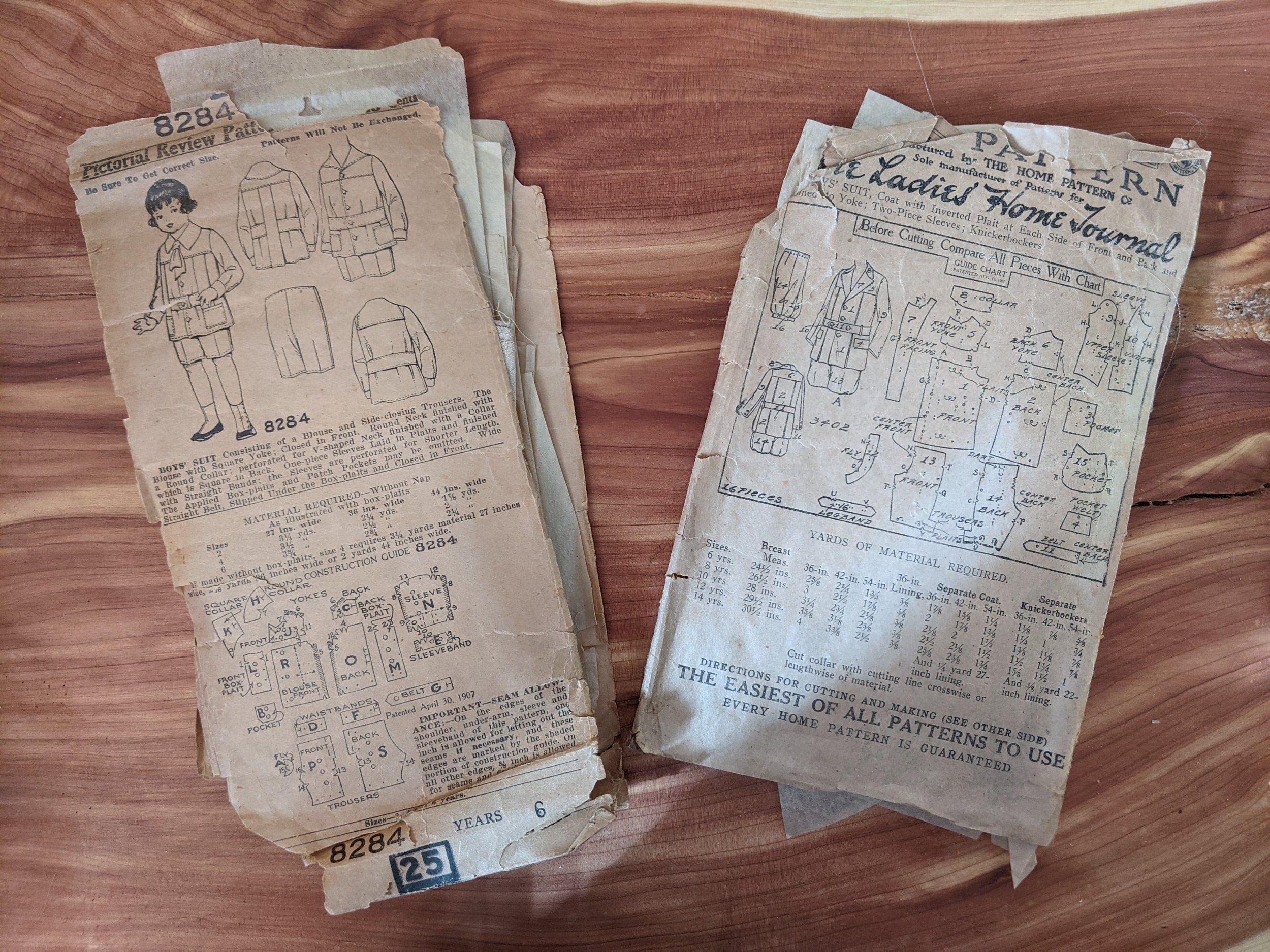Buying Sewing Patterns
In my last post, Buying a sewing machine, I mentioned I wanted to answer some of the sewing questions I get asked most often from people who are interested in learning to sew. I love answering these questions so this isn't meant to shut down any further questions but rather to try to compile everything in one easy to reference place, so I don't forget anything or so you don't lose the answers I spent like, half an hour frantically typing into our instagram DMs. I want to talk about modern vs vintage patterns, buying and finding patterns, and finding patterns that fit your body or learning how to modify patterns so they do.
I have a collection of maybe a hundred or so patterns, almost all of which are vintage, mostly 1950s to 70s but some earlier and some more later. I got the majority of my collection from a family friend who picked up a huge pile of 50s and 60s patterns at the Goodwill bins in Portland, and since then I've been collecting through a variety of sources which is what I'm going to write about. Aside from those free patterns I have spent anywhere from about $2 to $50 on individual patterns, and Adam's Christmas gift to me was a $90 Issey Miyake. I have my eye on some $70-$120 original 1920s patterns. My point is that there can be a big range, but normally I spend like $5-$15 on vintage patterns I see and like. New patterns from the "big 4" pattern companies - Simplicity, Vogue, Butterick, and McCall's - often cost $5 to $20. Patterns can cost as much as you're willing to pay for them, but don't have to be very expensive. That's all. I store them under my bed in a cardboard comic book bin and most of them are either in comic book sleeves or some other little plastic folder to keep them a little safer. Now we can talk about where I buy patterns, how to pick them, what the difference is between modern and vintage, indie pattern companies, etc.
Modern "Big 4" pattern companies are the patterns you'll find at JoAnn's or Michael's or whatever big fabric store you go to when you're home for the holidays and your mom bought you a sewing machine. My first pattern was Simplicity 8741, which I bought at a JoAnn's when I was home for Christmas from college my junior year, December 2018. (Feels like a long time ago.) Anyway, Simplicity 8741 is an "easy sew" lined jacket pattern that I made in a really awful crunchy orange polyester way too large. (Still own it.) Here are some things to remember about modern patterns. I tend to find that modern mass market patterns are very boring and very easy to sew because they're made for beginners because not that many people sew compared to 20, 30+ years ago, so they're marketed to beginners and to be pretty much appealing to everyone, which to me ends up being really boring. Te other thing about modern mass market patterns is that they're often created with a lot of what is called "ease." Ease is fabric added to a pattern so that it's not skin tight to your body. An intentionally oversized top has a lot of ease because it's supposed to fit loosely. A close fitting dress has a little bit of ease because your body has to move in clothing so it can't completely hug your figure so much you can't breathe. Stretch clothing like a ribbed tank top has "negative ease" because it has to stretch to fit your body closely, so it's cut smaller than your actual body. Many contemporary patterns have too much ease, kind of a "vanity sizing" thing that actually ends up being extremely frustrating and confusing because making a piece of clothing in your measurements may end up being very large due to the pattern design. It's bad design. However, all that being said, many contemporary patterns are very easy to follow, have very simple instructions and are well illustrated. I was able to successfully sew a jacket right out of the gate. You can read reviews for patterns from people who made them on Sewing Pattern Review which also offers reviews on machines, etc. and all manner of patterns.


On the left was my first pattern, and then Simplicity 8243 was my second, so I was really excited about vintage patterns right away. The modern re-releases, like Simplicity 8343, are a whole different topic which is very controversial in the vintage sewing community. People say they're worse, but also people are very protective of the "originals" which to me is a little nutty. There's truth to it sometimes but not always.
Of course, there are many other pattern makers outside of these big 4 companies. Small indie pattern companies produce great patterns for beginner and advanced sewists, as well as historical costumers. I own "Breaking the Pattern" which is a pattern book from two Finnish sisters who produce their own patterns that are flattering and modern and gets pretty good reviews. I also like Third Born Clothing, a Maine-based designer who offers pattern packs (fabric included). I took a class from Aneka Truman of Made to Sew, and her pattern was easy to follow and modify. She also has youtube videos of all the steps for her patterns which is really thoughtful. i don't have tons of experience with indie patternmakers because I prefer collecting historical patterns so I can't speak too much to this but there are excellent modern options from small designers. In my experience they are created to a higher standard than a random mass produced pattern.
I immediately started buying vintage patterns because I like thrifting and I found a vintage Koos van den Akker jacket pattern from Scrap Exchange in Durham NC. Thrifting is a fun way to find vintage patterns in the wild, so now whenever I go to any vintage or thrift store I look for or ask about patterns. You can find really interesting pieces, sometimes for a lot cheaper than online, and sometimes ones you never would have thought to look for. A woman in a pattern buying group I am in on Facebook once found a Piguet pattern for $3 at a thrift store in Florida, which is an old pattern designer whose patterns go for upwards of $200 if they sell online at all. But in-person shopping can be limiting in terms of sizing and access since it's not particularly common to find a lot of patterns at thrift stores in my experience. On the other hand, looking online can be tricky as well. Patterns are described by company name and number (like Vogue 2203) so it's up to the seller to add information like "Claude Montana skirt set" in order to make the pattern searchable.

The first thing I usually do to find patterns is search Etsy for key words I might be interested in. "90s cargo pants womens pattern" "50s backless dress pattern" "Mens 70s jacket pattern" "Vogue Individualist" "Piguet pattern" "swing coat pattern vintage." Etsy is good for this because the images are the most important part of the listing. I find eBay somewhat worse in terms of displaying images. I just scroll and take note of the patterns I like. Then I check eBay to see if I can find my size or a cheaper option. If I find a good seller while I'm comparing I might scroll through their listings. I know my size range in patterns so while I can usually grade a pattern up or down, it's less work to buy something that's already my size. If I can't find a pattern I really want I will set up an eBay alert for it. Pattern numbers get reused, too, so looking for Vogue 2203 will bring up a variety of patterns. Don't be alarmed.
Beyond this, I am part of some vintage pattern Facebook groups including "Vintage Sewing Patterns Auction Parlor" in which people list patterns and you bid in the comments for a week and then that week's auction ends. Some people in this group are full time pattern sellers so you can check their eBay/Etsy/web listings if they sell patterns that appeal to you. The takeaway here is to cast a wide net and look at as many patterns as you can to find what you like. Groups like that one are a great way to be exposed to patterns you didn't think to look for but might love.
The final point I'll touch on is pattern sizing, which is confusing. The rule of thumb is to pick patterns based on the measurement at the widest part of your bust/chest for both men's and women's shirt, jacket, and dress patterns. For pants/skirt only patterns (patterns which do not have any top component) when making women's patterns you should base the sizing off of your natural waist (where you typically put your hands when you put your hands on your hips, on some people this is the narrowest part of your waist). The pattern sizing will be under "Body measurements" on the envelope or on the envelope flap. This is different from "Finished garment measurement" which mostly just gives lengths, not the final measurements of the piece on your body. To determine ease for a specific pattern you must either make a mockup out of cheap fabric (called a muslin) or measure each piece and subtract the seam allowance. Finally, if your measurements are not the same as the pattern measurements (which is normal), you can look at articles or YouTube videos about grading patterns, for which there are many intelligent resources, of which I am not one.

That's all I can think of for now, please comment or message me if any of this is unclear. Of course there are still many more aspects of finding, choosing, and making clothing from patterns, but hopefully this provides a starting insight into this process.
